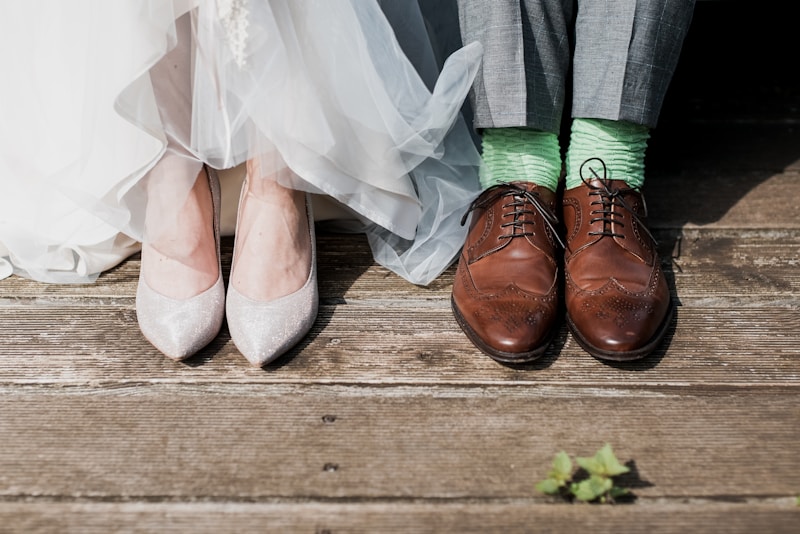Understanding Different Wedding Traditions Across Cultures
Understanding Different Wedding Traditions Across Cultures
Weddings are remarkable occasions filled with love, joy, and a rich tapestry of traditions. As cultures across the globe celebrate the union of two individuals, unique customs add depth and meaning to each ceremony. In this article, we will explore the intriguing world of wedding traditions from various countries, shedding light on their significance and the emotions associated with them. Understanding these different wedding traditions not only enhances our appreciation for diverse cultures but also enriches our own wedding experiences.
The Significance of Wedding Traditions
Wedding traditions serve as a bridge connecting the past with the present. They carry forward ancestral values, foster community bonds, and strengthen the family unit. Each culture has its own set of rituals that reflect its history, beliefs, and values. For those interested in planning a wedding or simply learning about cultural practices, understanding these elements becomes vital.
Common Themes in Wedding Traditions
While wedding traditions vary widely across cultures, several themes often emerge. Let's take a look at some of these commonalities:
| Theme | Description |
| Rituals for Blessings | Most cultures incorporate rituals meant to bless the couple, involving family or spiritual leaders. |
| Symbolic Attire | The attire worn during wedding ceremonies often holds symbolic significance, representing purity or cultural heritage. |
| Ceremonial Feasting | Fellowship and celebration through feasting with family and friends are universal traditions. |
| Gift Giving | Traditionally, couples receive gifts as a sign of goodwill and support from their community. |
Western Wedding Traditions
In many Western cultures, weddings typically follow similar practices, albeit with regional variations. Here are some noteworthy traditions:
Exchanging Rings
Usually, couples exchange wedding rings, symbolizing their eternal love and commitment. The circular shape of the ring signifies an unbroken bond. The act of placing the ring on the partner’s finger is often accompanied by vows.
The White Wedding Dress
Originating from Queen Victoria's wedding, the white wedding dress has become a staple in Western cultures. It represents purity and innocence, and many brides cherish this tradition by wearing something blue, borrowed, and new.

Asian Wedding Traditions
Asia is home to an array of unique wedding customs, characterized by vibrant celebrations and intricate ceremonies. Here are some prominent examples:
Chinese Wedding Traditions
The Chinese wedding ceremony is steeped in symbolism and ritual. The color red, representing happiness and prosperity, is predominant in decorations and attire. One tradition is the tea ceremony, where the couple serves tea to their elders as a sign of respect and gratitude.
Indian Wedding Traditions
Indian weddings are renowned for their grandeur and lengthy ceremonies. The Saptapadi, or seven vows, is a key component, where the couple takes seven steps together, each representing a vow to one another. Cultural attire is also vital, with brides often donning elaborate lehengas adorned with intricate designs.
African Wedding Traditions
Africa's vast cultural landscape results in diverse and captivating wedding traditions.
Nigerian Wedding Traditions
Nigerian weddings feature vibrant colors and elaborate attire. Customarily, traditional rites include the bride price, which symbolizes respect for the bride’s family. Additionally, traditional dances and music play a crucial role in the celebration.
Maasai Wedding Customs
The Maasai people in Kenya and Tanzania practice a unique wedding tradition that involves a series of rituals, including the negotiation of bride price and blessings from elders. Traditional Maasai wedding attire is striking, consisting of bright beads and shuka (cloth), symbolizing their heritage.
European Wedding Traditions
Europe boasts a rich array of wedding customs, each country offering something distinct. Here's a look at a few traditions:
Scottish Wedding Traditions
In Scotland, the groom often wears a kilt, representing his clan. One unique tradition is the handfasting, where couples bind their hands together with a ribbon as a symbol of their union. This ritual has seen a resurgence in modern weddings.
Italian Wedding Traditions
Italian weddings are often characterized by festive celebrations lasting multiple days. A popular tradition involves throwing rice or confetti at the couple, symbolizing prosperity and fertility. Another significant aspect is the La Tarantella, a lively dance performed at receptions.
Celebrating Love Through Various Traditions
As we explore these diverse wedding traditions, one thing is clear: they all center around celebrating love and commitment. Each culture has distinctive ways of expressing their values and beliefs through rituals and ceremonies. Understanding these different wedding traditions can offer valuable insights for couples planning their own weddings.
What to Consider When Choosing Wedding Traditions
For couples looking to incorporate diverse traditions into their wedding, here are some suggestions:
- Research and Understand: Spend time learning about various customs and their significance. This knowledge will enrich your ceremony.
- Personalize Traditions: Adapt traditions that resonate with you as a couple. Personalizing them can make them even more special.
- Involve Your Families: Engaging family members in the planning can help honor heritage while creating new memories.
- Be Inclusive: If you and your partner come from different backgrounds, consider blending traditions that reflect both cultures.
Conclusion
Understanding different wedding traditions allows us to appreciate the rich diversity of human experiences. From the vibrant ceremonies in Africa to the elegant celebrations in Europe, each tradition tells a story of love, commitment, and cultural identity. As you plan your wedding or simply learn about these traditions, remember that love is the central theme that binds us all, transcending cultural barriers. Embrace and cherish these customs as a beautiful expression of love, loyalty, and family.
As you navigate the exciting journey of planning a wedding, consider incorporating elements from various traditions that speak to your heart, enabling you to create a ceremony that honors both your love story and your unique cultural heritage.
